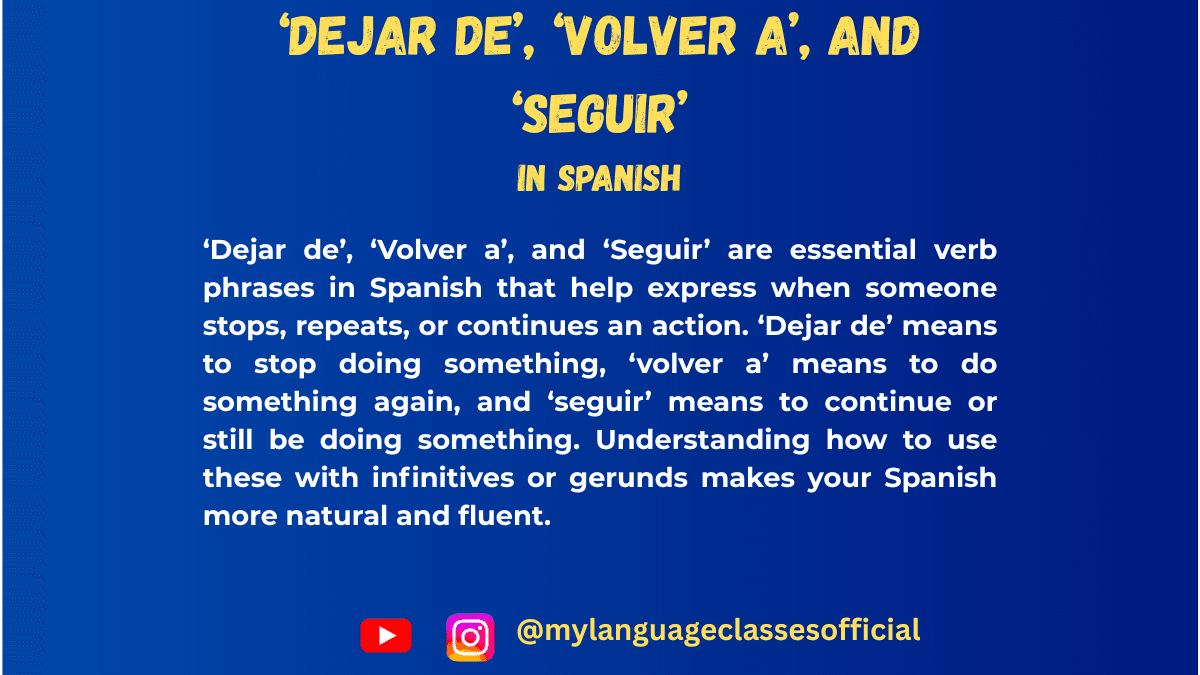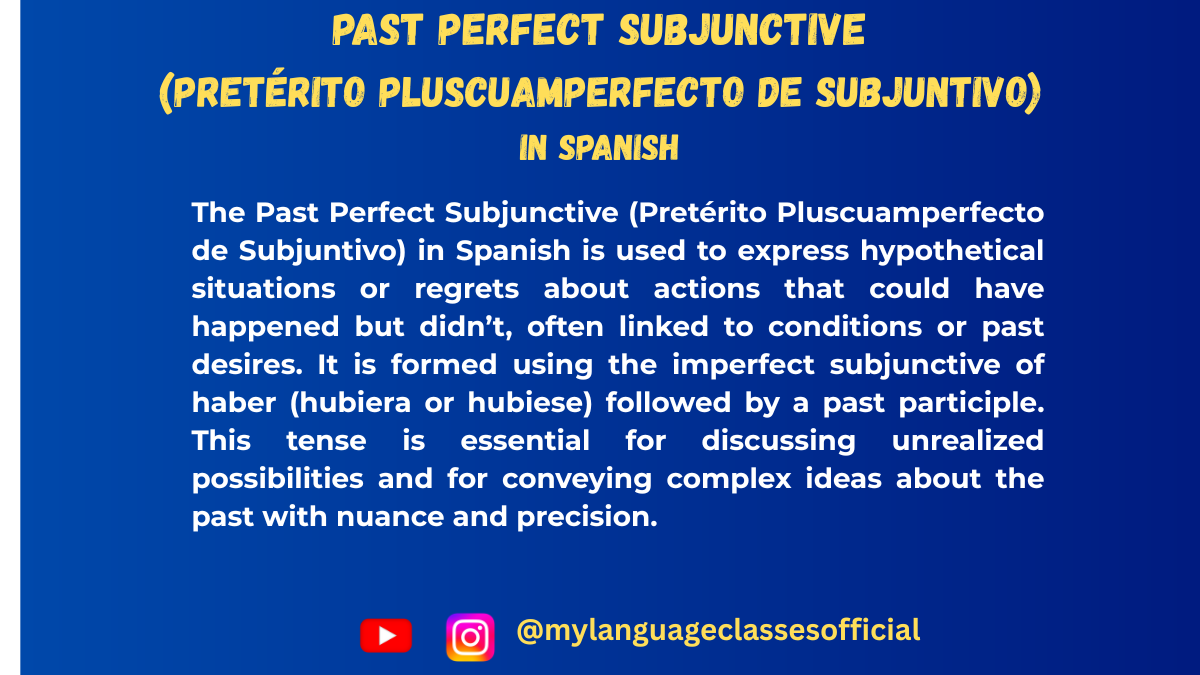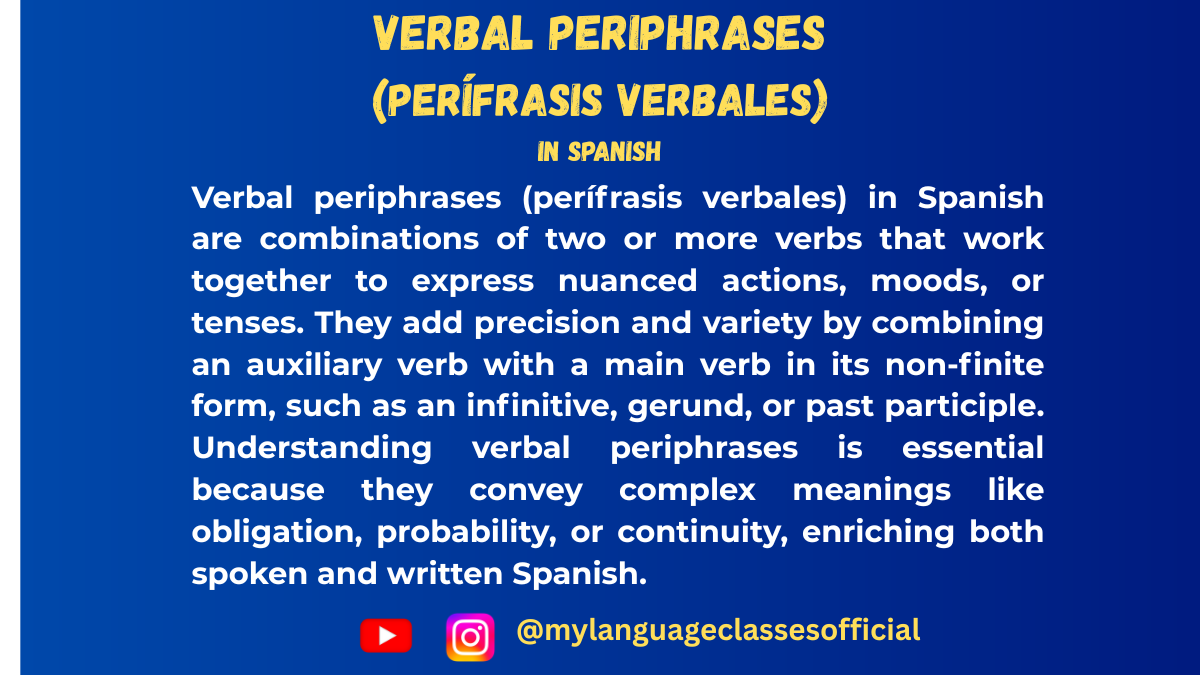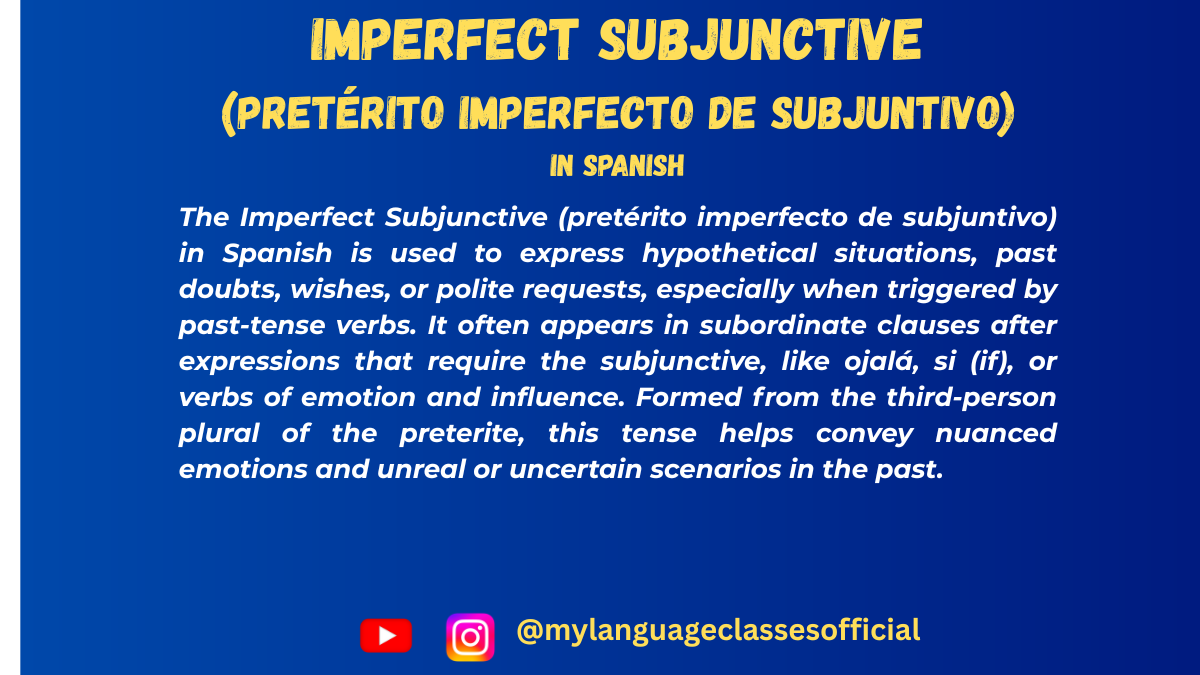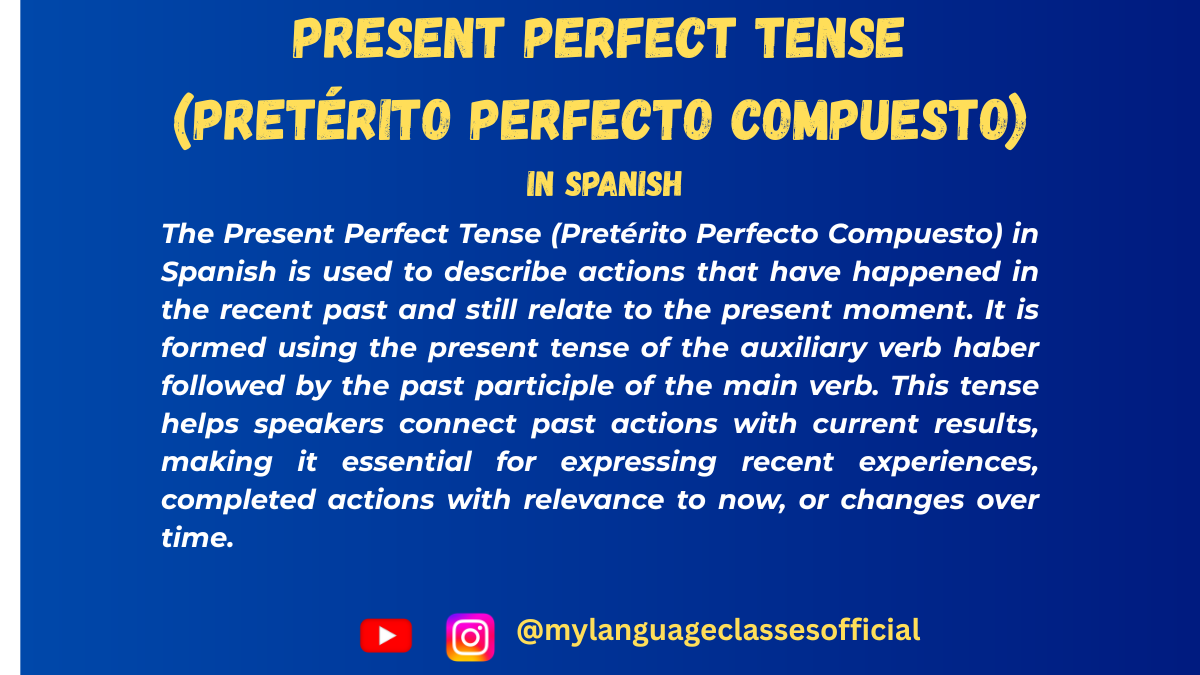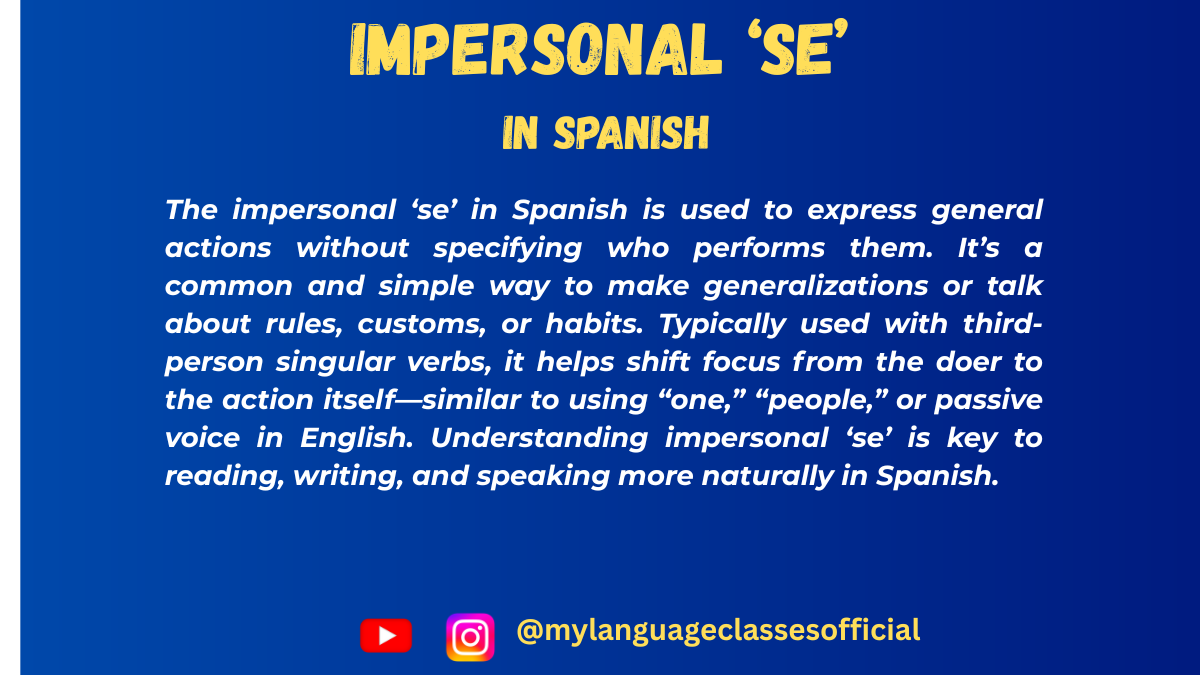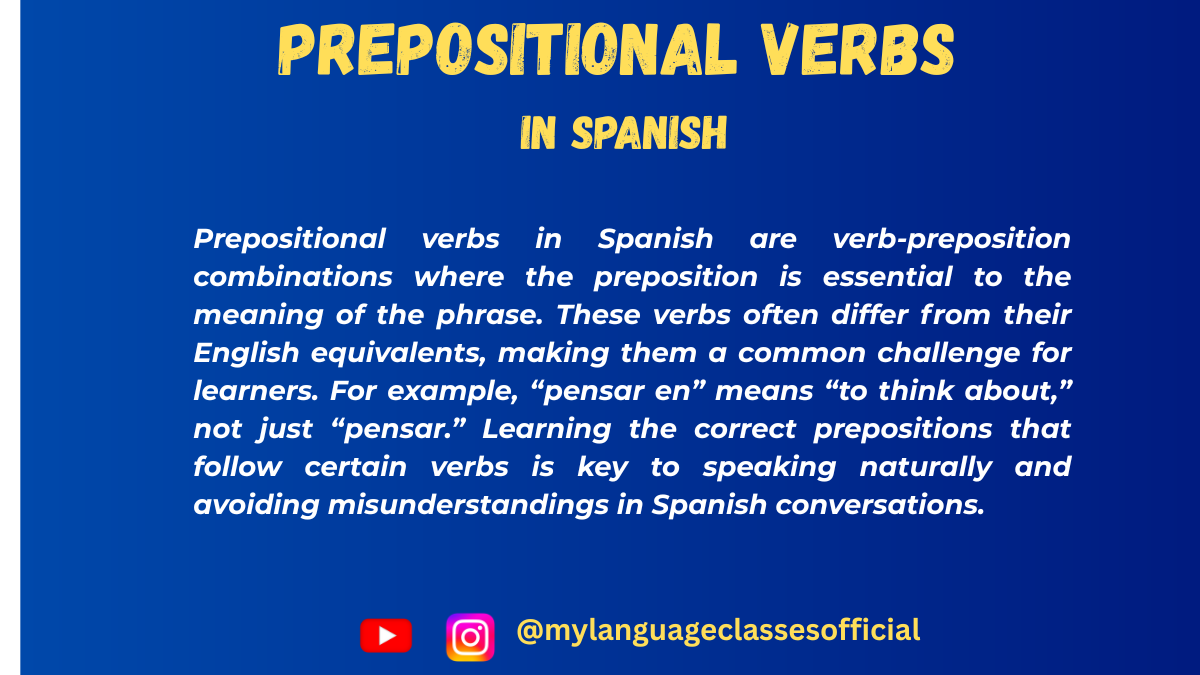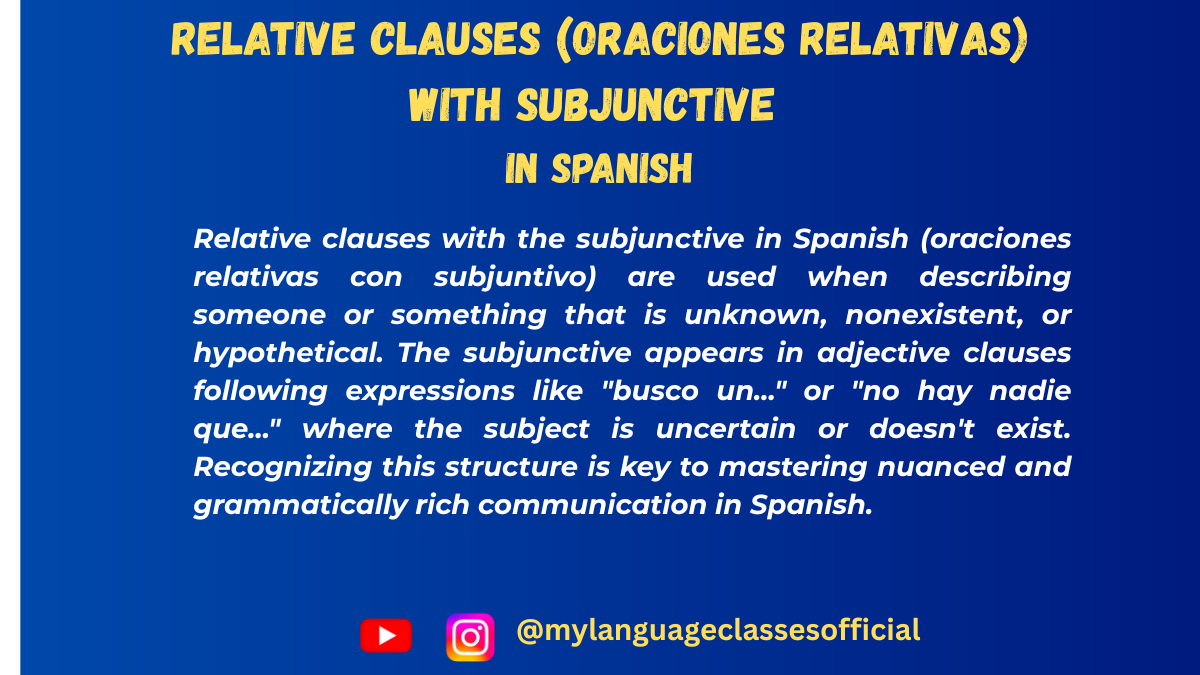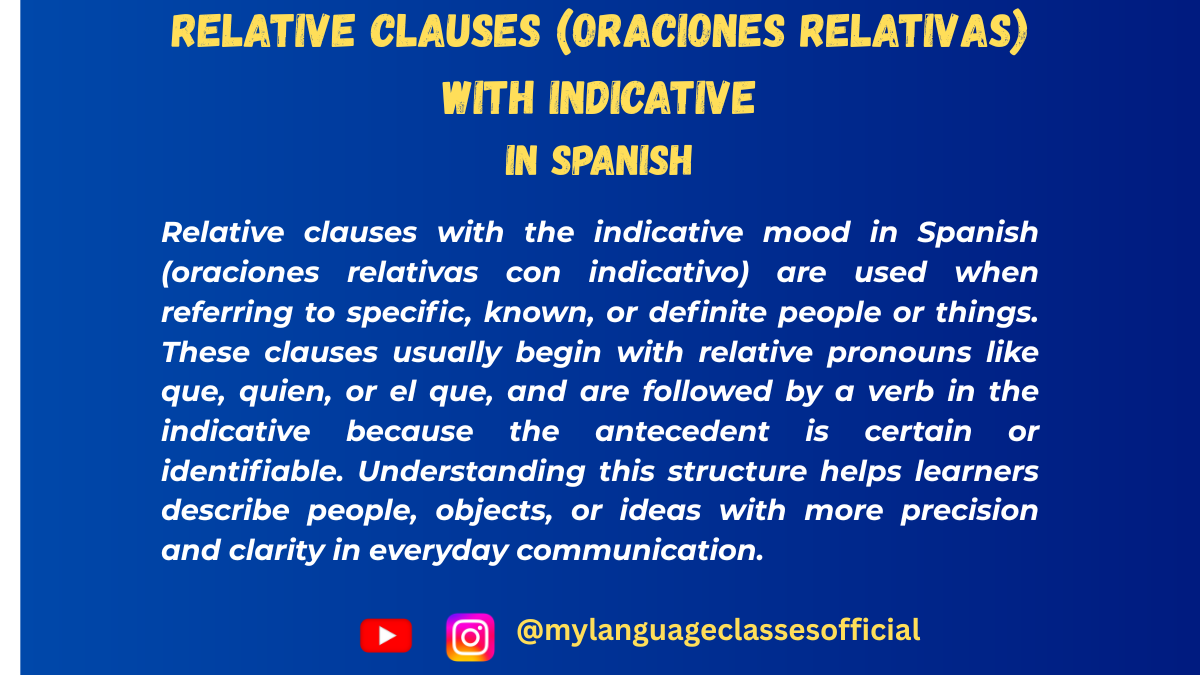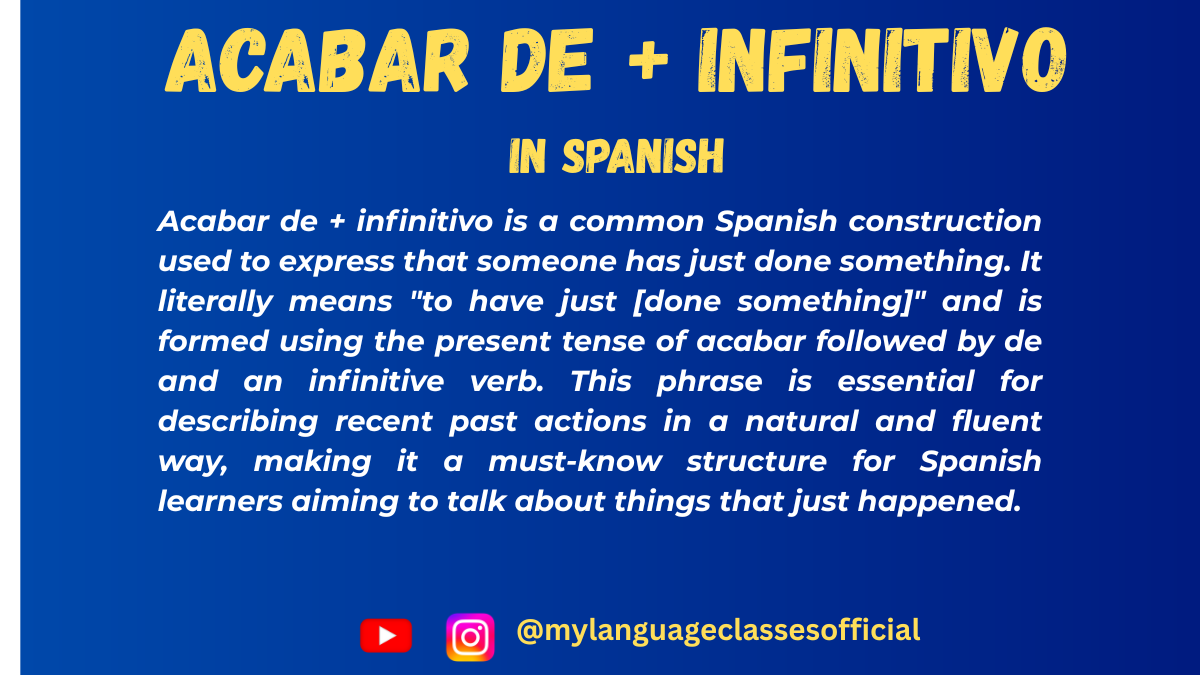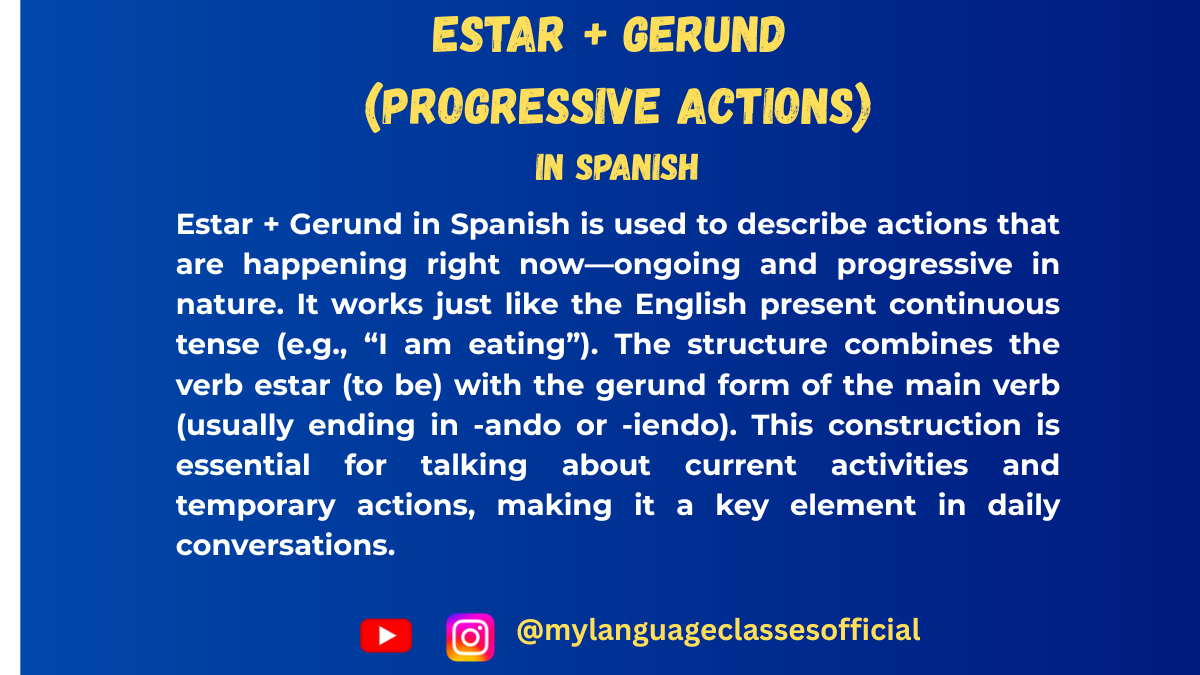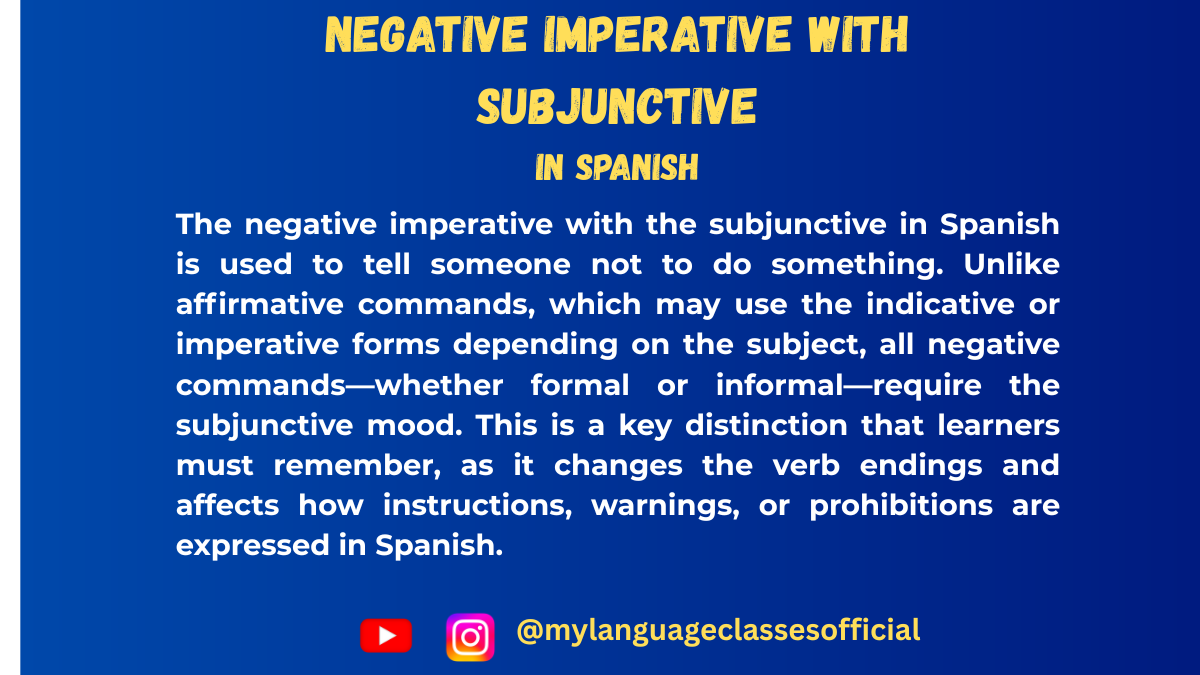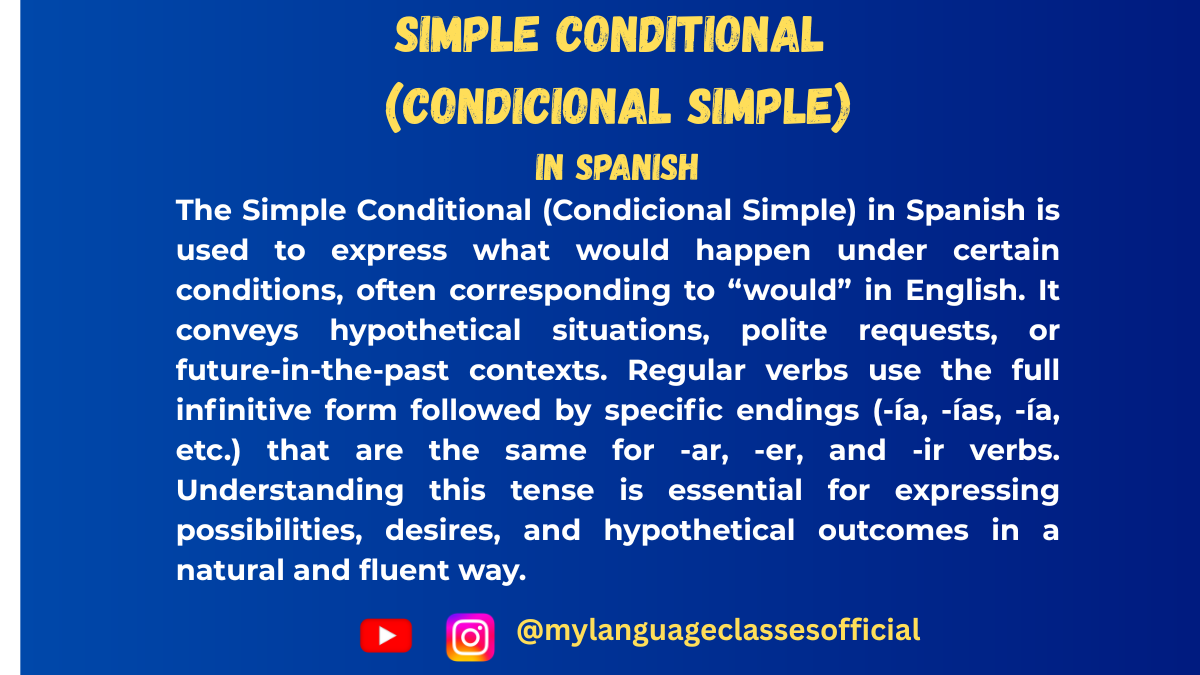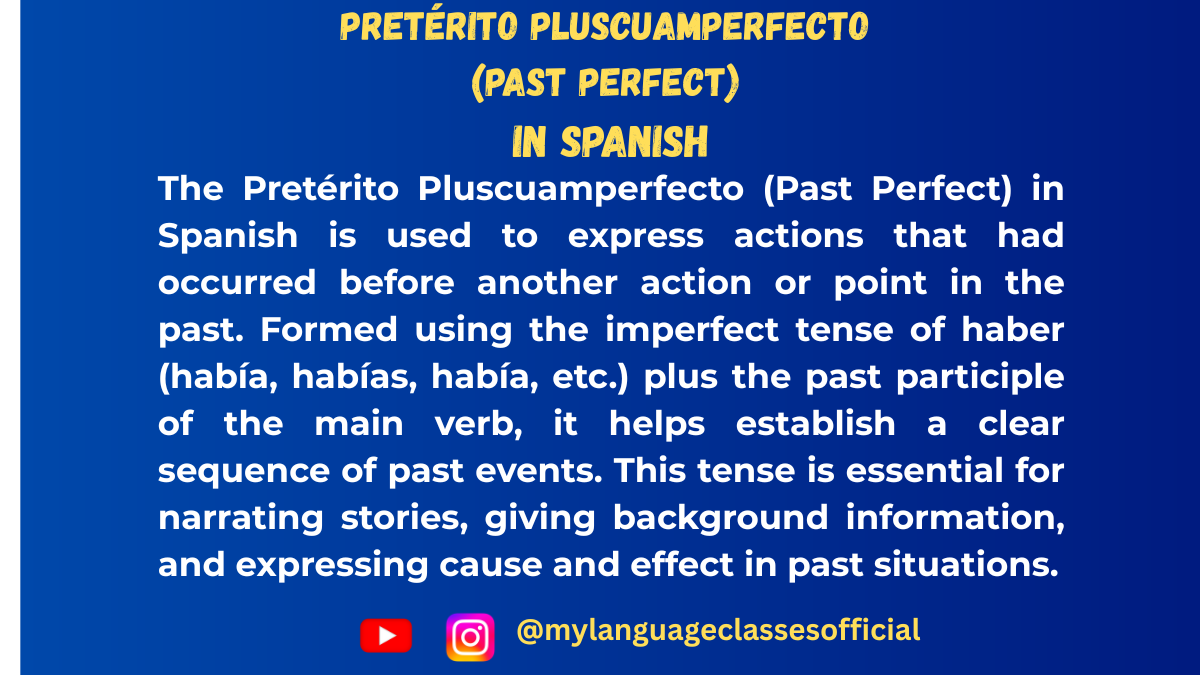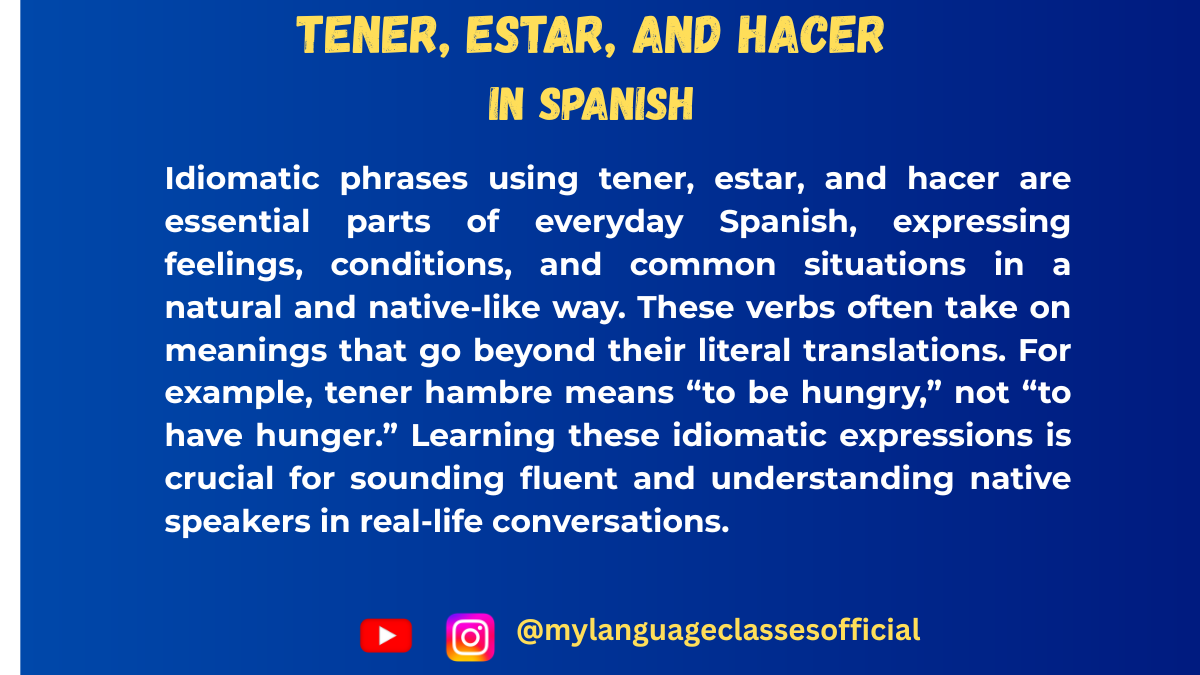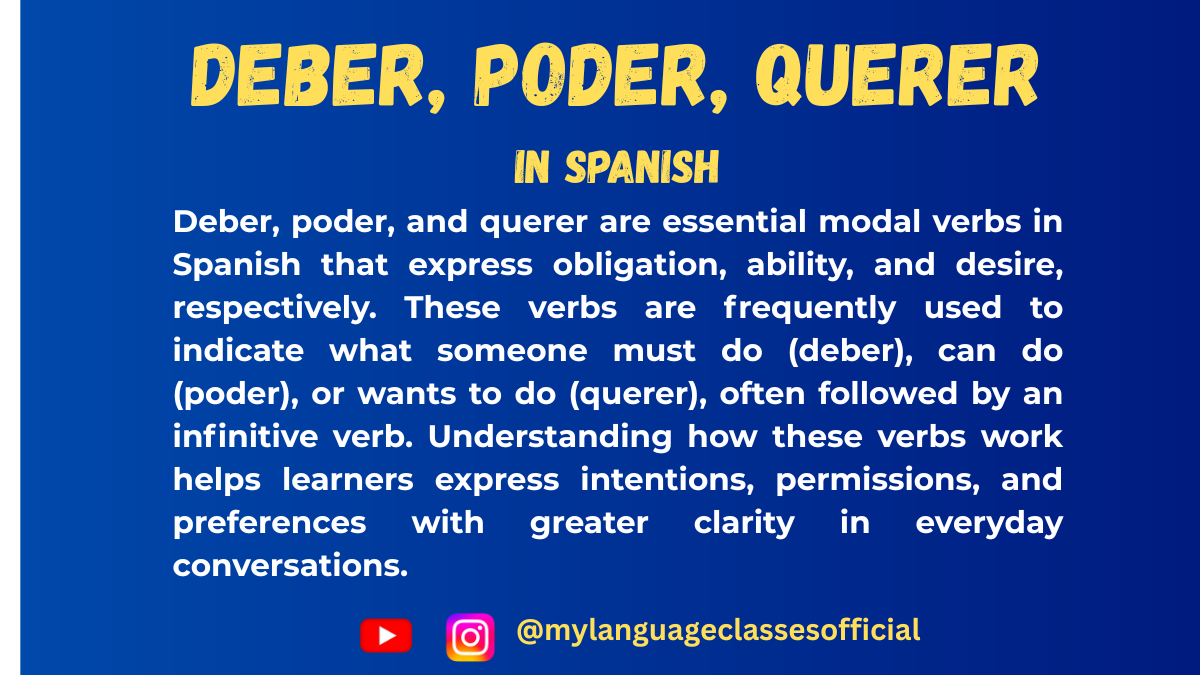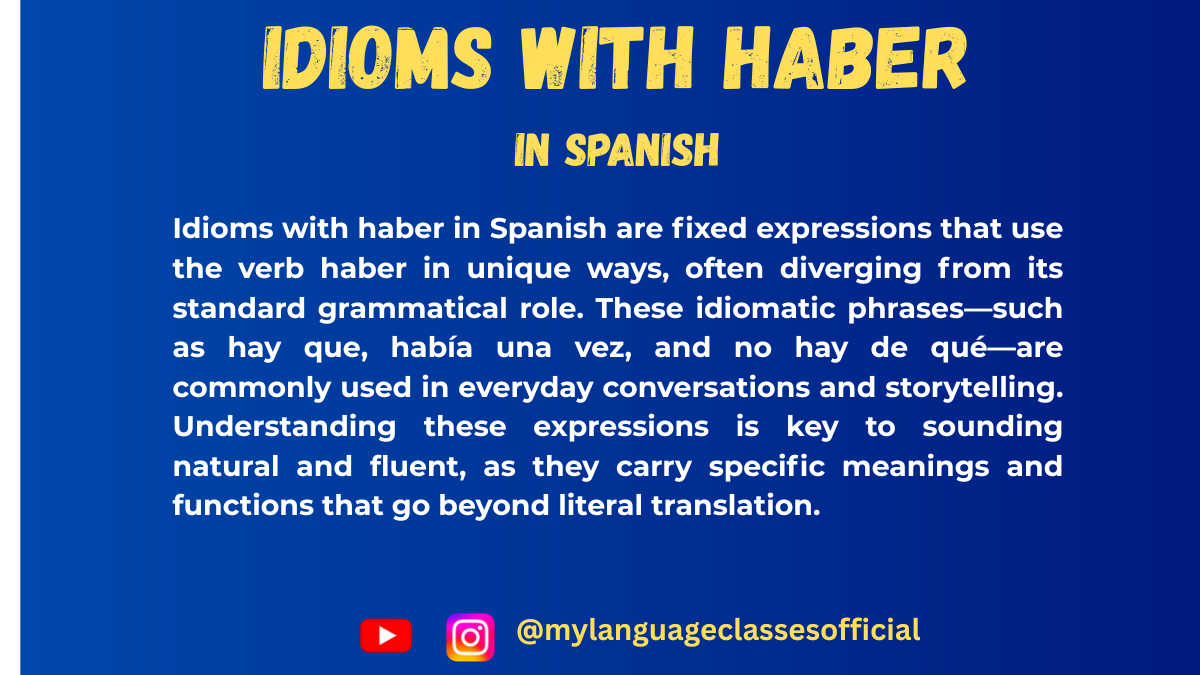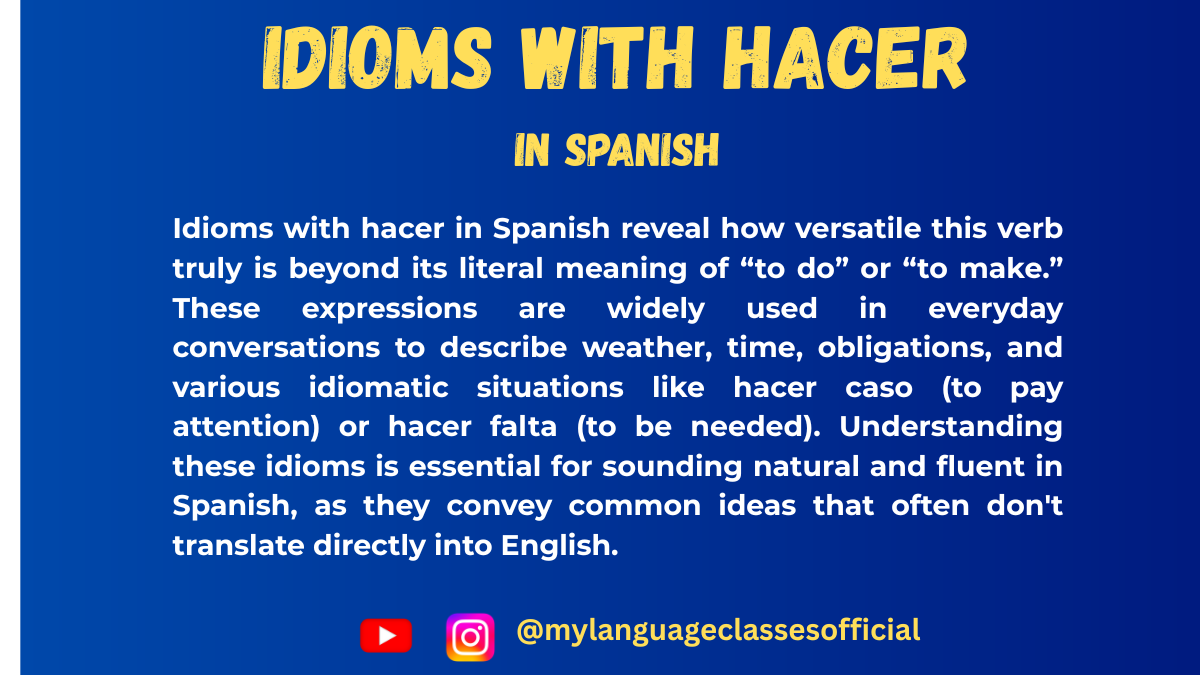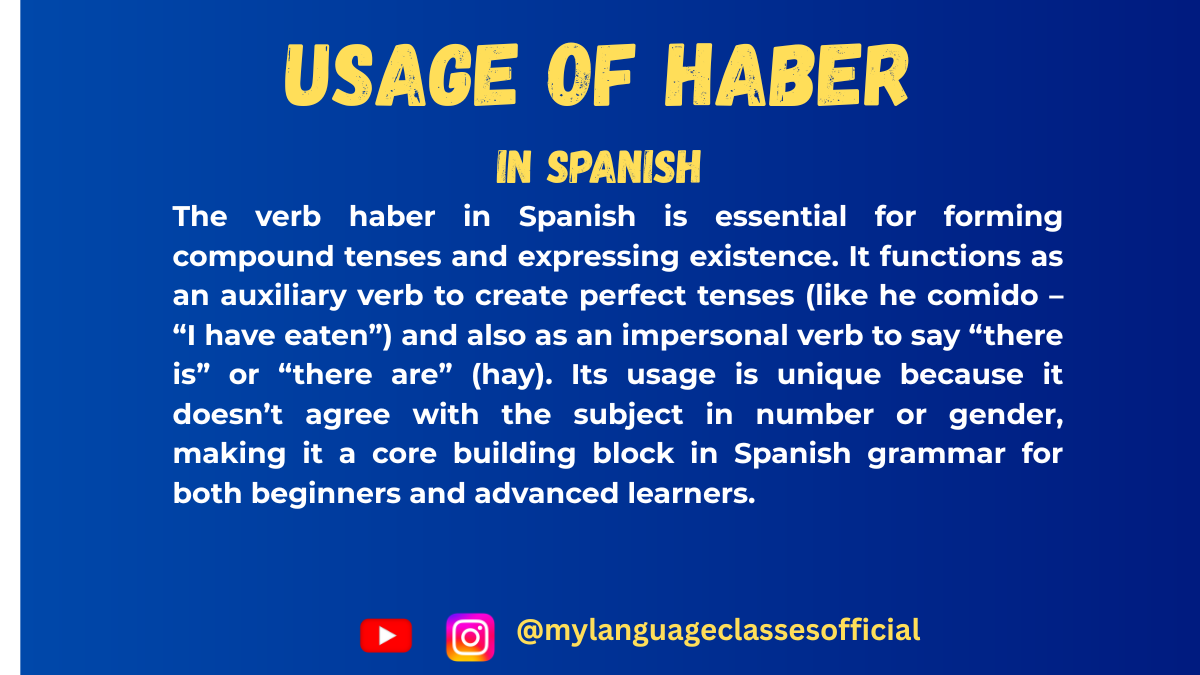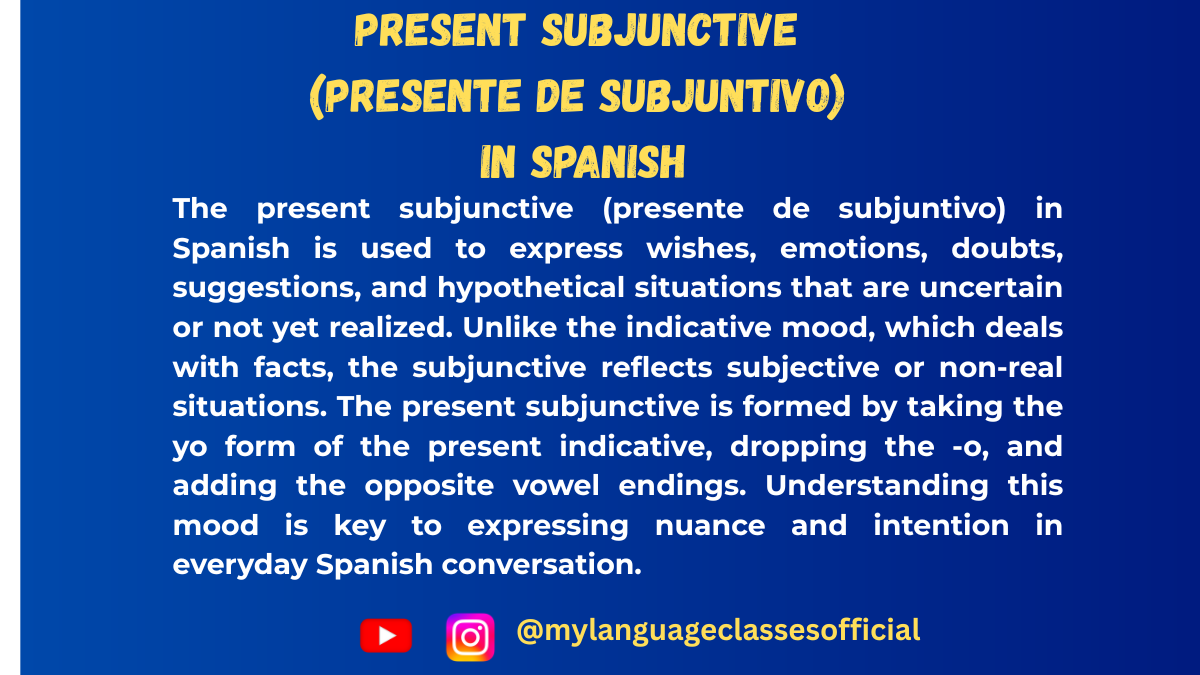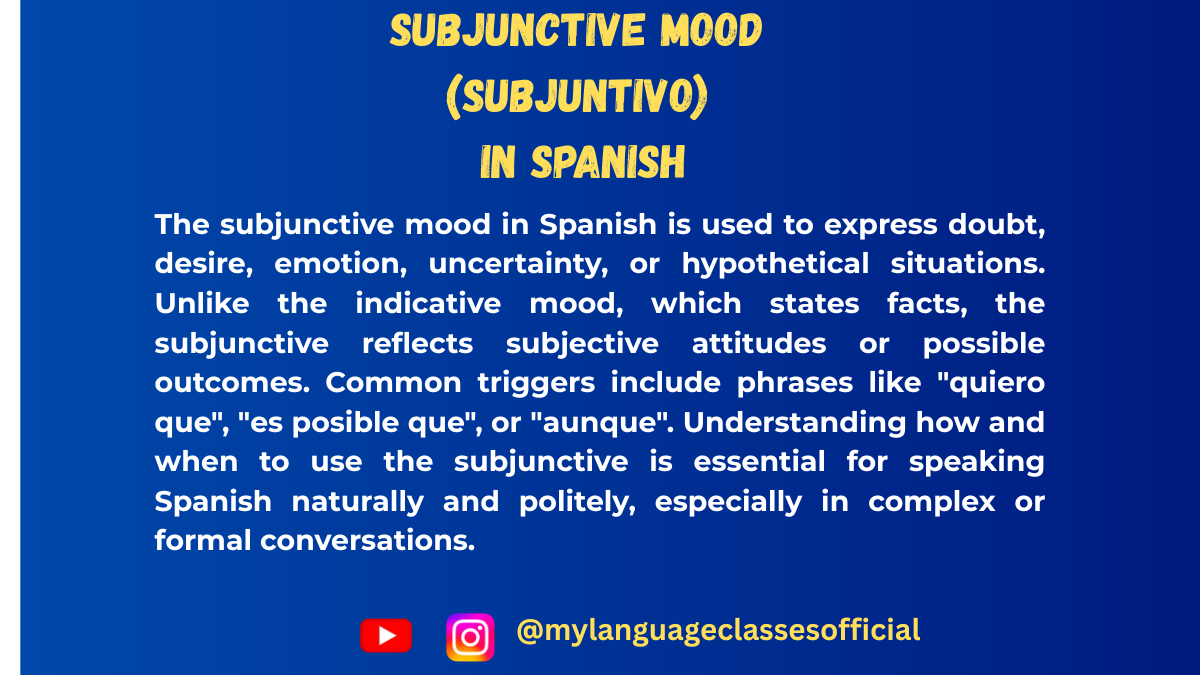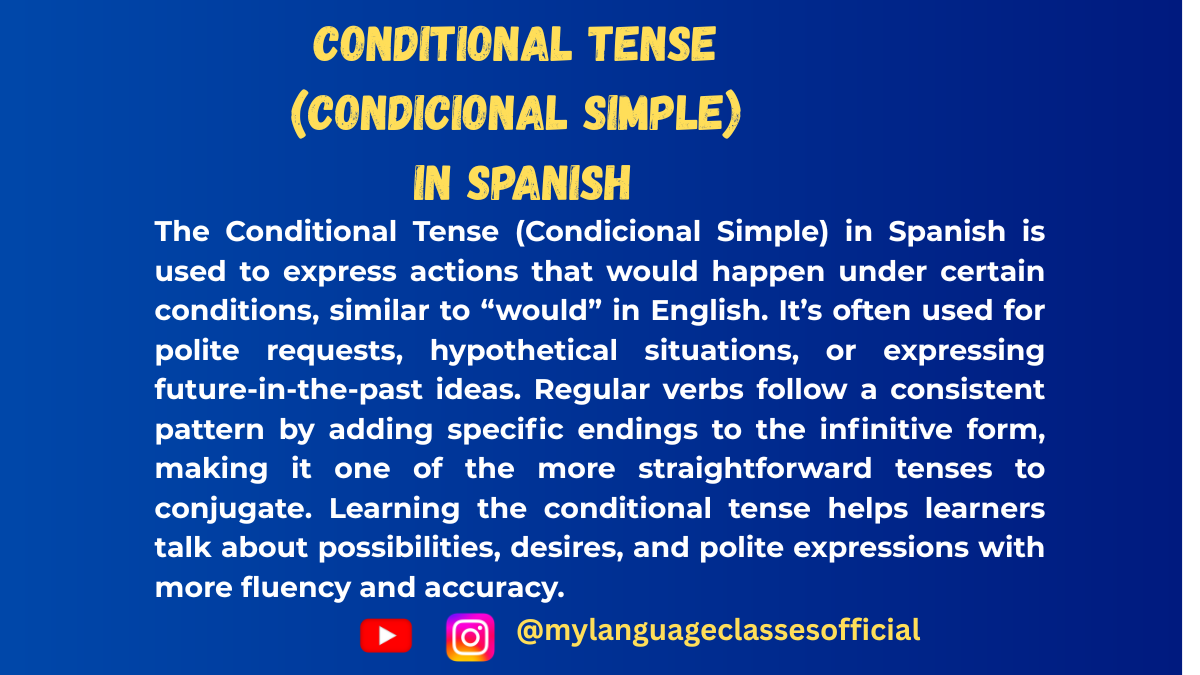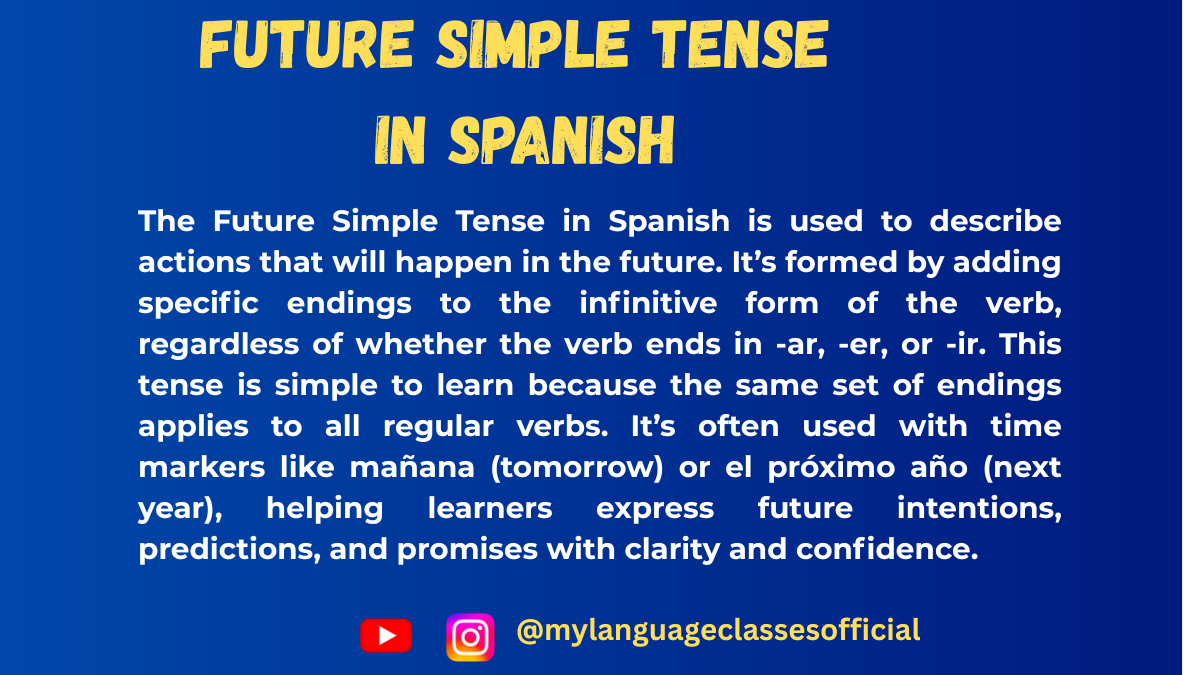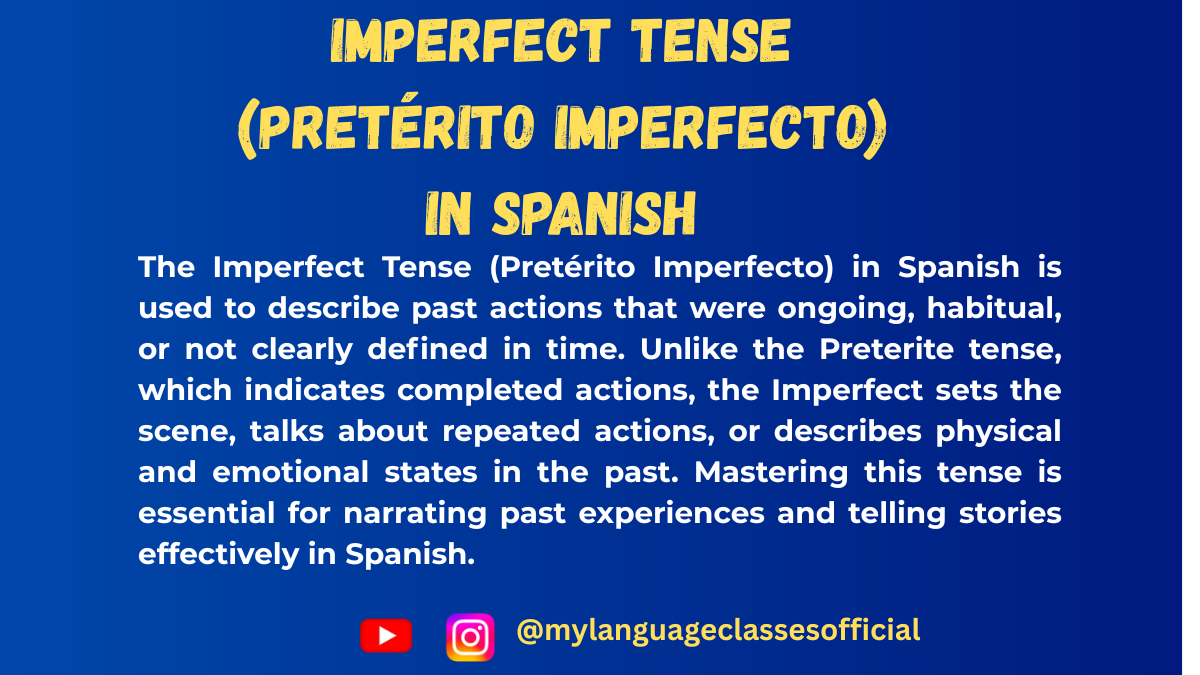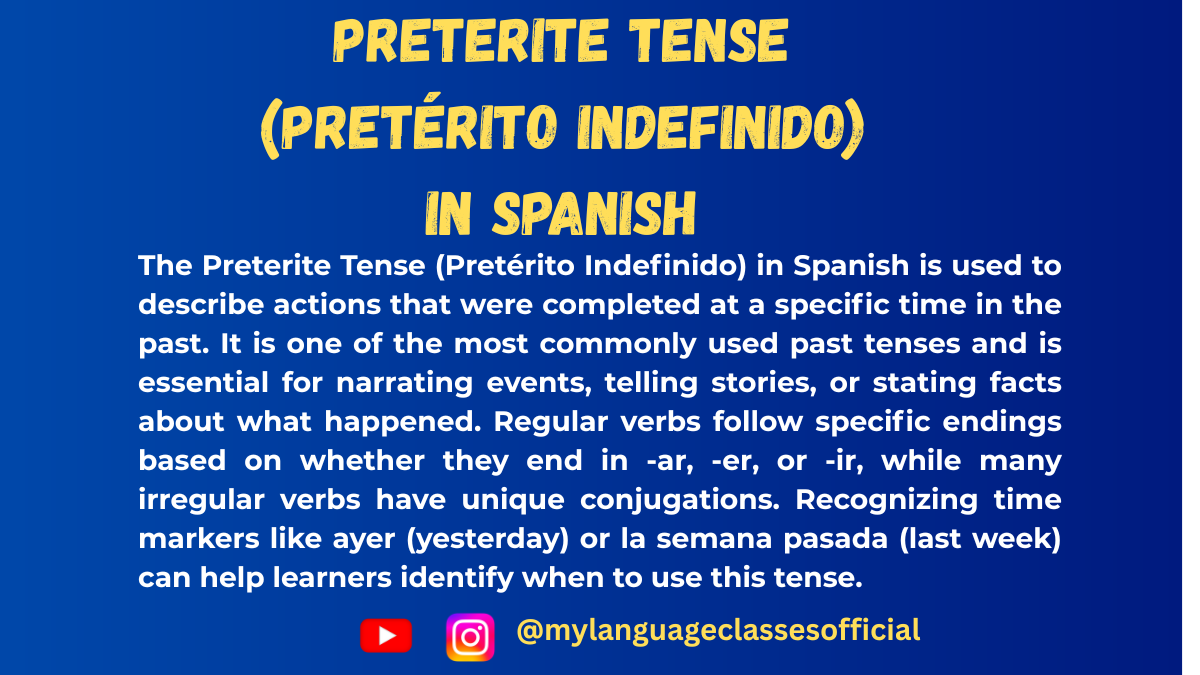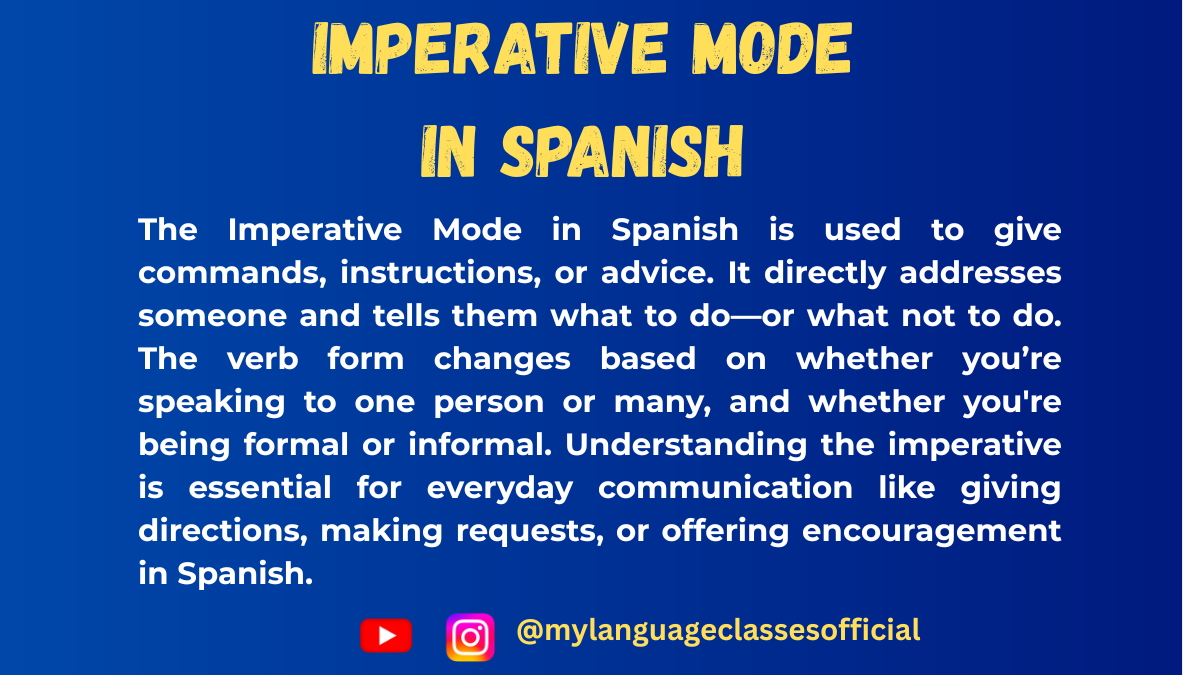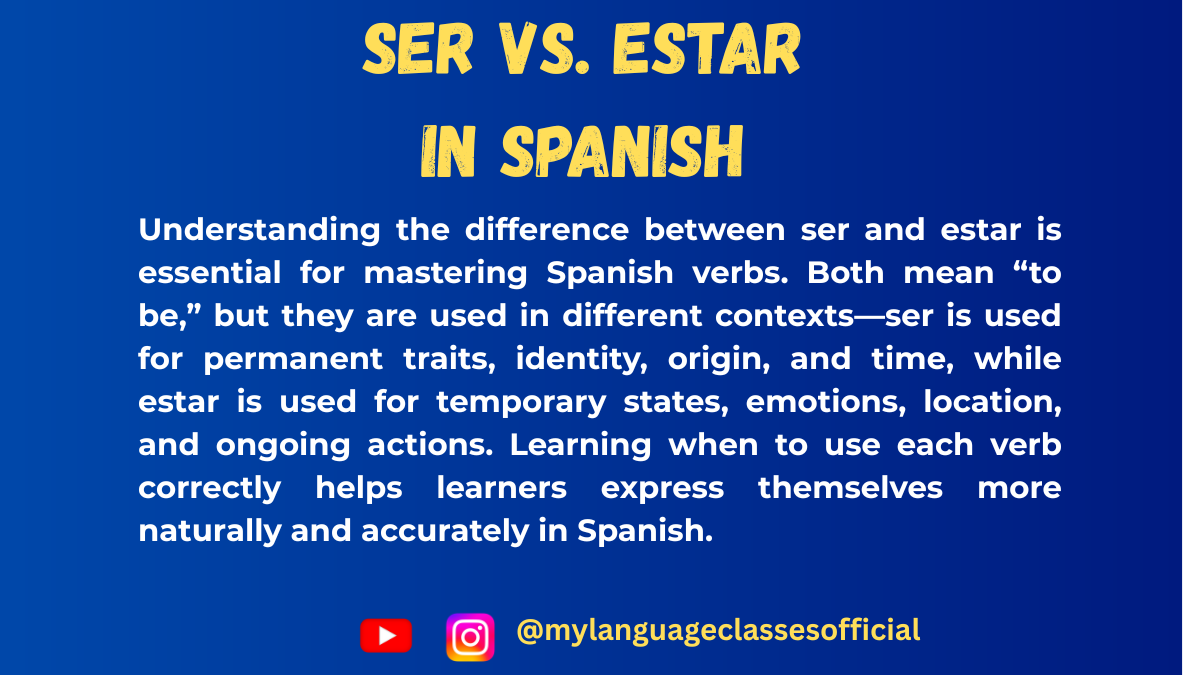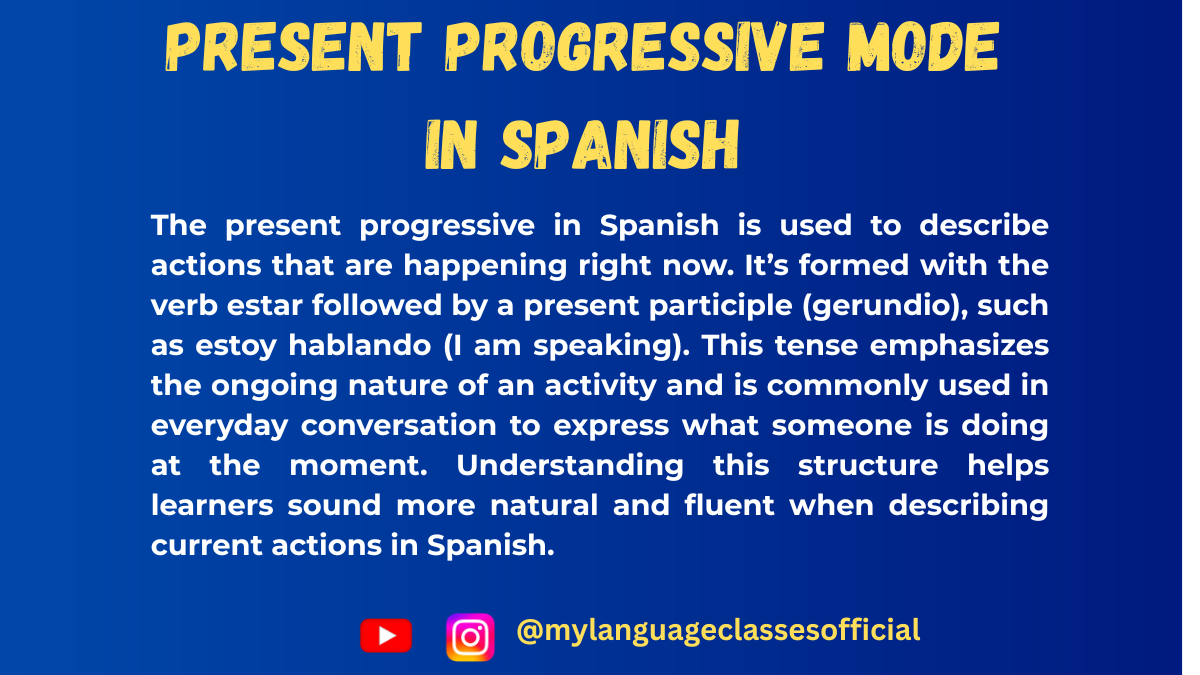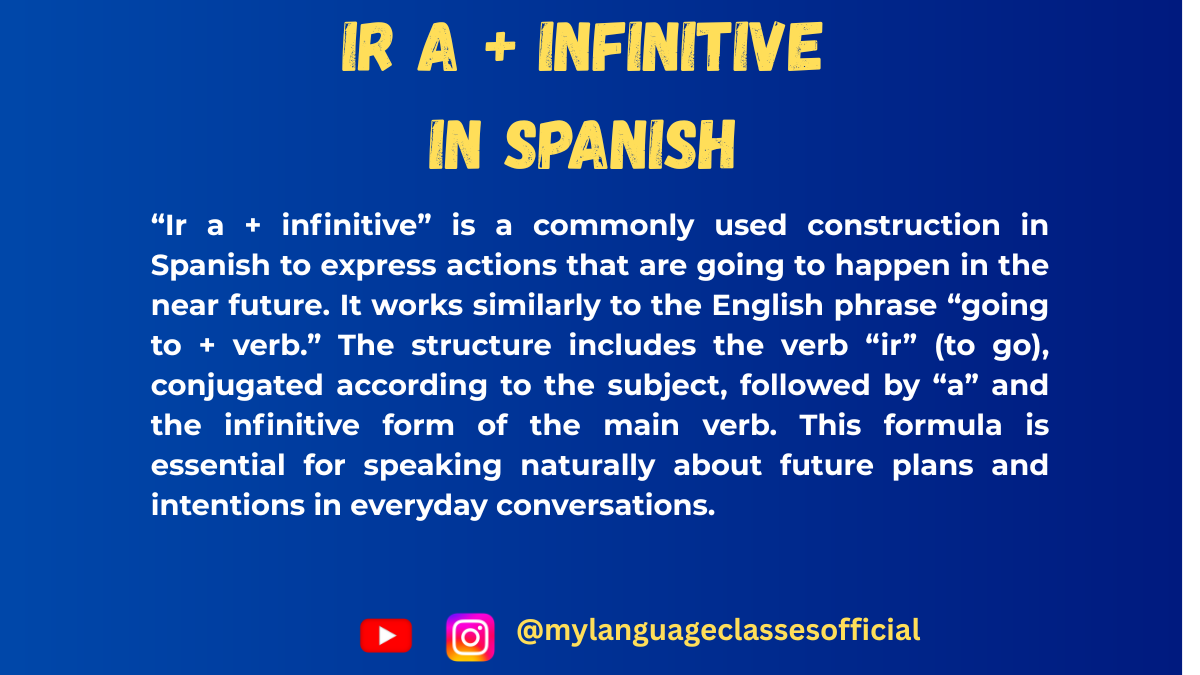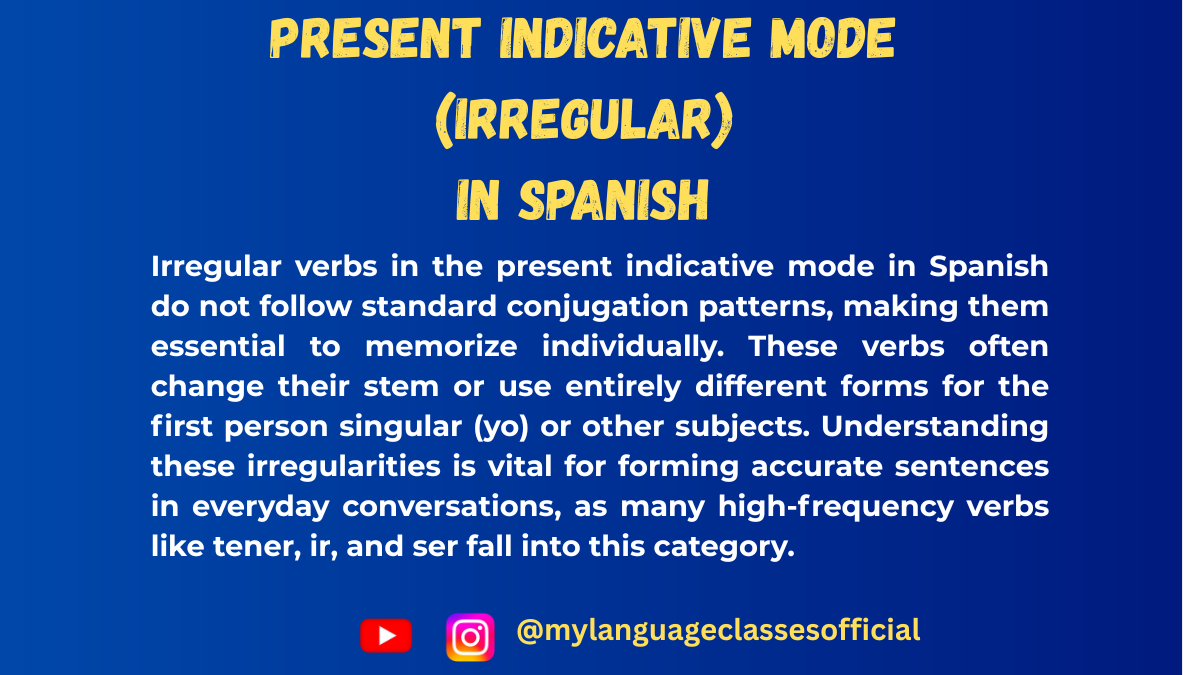Your cart is currently empty!
Category: Tenses in Spanish
Understanding Tenses in Spanish is one of the most important steps in learning the language. Tenses show when an action takes place — in the past, present, or future. For example: Yo estudio (I study), Yo estudié (I studied), Yo estudiaré (I will study). With the right use of tenses, you can express time clearly and avoid confusion.
How Tenses in Spanish Work
Spanish verbs change their endings depending on the subject and tense. The three main categories are the present (presente), past (pretérito and imperfecto), and future (futuro). In addition, Spanish has compound forms like the present perfect (he estudiado) and subjunctive moods used in complex sentences.
In this category, you’ll find Spanish Grammar Lessons with Rules, Examples and Exercises that explain each tense step by step. Every lesson provides examples in everyday contexts and includes practice tasks so you can check your answers.
Why Tenses in Spanish Are Important
Without tenses, communication becomes unclear. For example, saying yo estudio without context could mean “I study now” or “I studied before.” By mastering Tenses in Spanish, you gain the ability to talk about past experiences, present activities, and future plans with accuracy. Regular practice with examples and exercises makes these forms much easier to remember and use.
Scroll down now to explore lessons on tenses and take your Spanish grammar to the next level.

Understanding ‘Dejar de’, ‘Volver a’, and ‘Seguir’
Verb Phrases in Spanish Explained
If you’ve ever wondered how to say things like “I stopped eating sugar,” “I started studying again,” or “I’m still learning Spanish” in Spanish—then you’re in exactly the right place.
Spanish verb phrases like “dejar … Read more

Past Perfect Subjunctive in Spanish: How to Use Pretérito Pluscuamperfecto de Subjuntivo
Mastering the Past Perfect Subjunctive in Spanish Made Easy
Have you ever wanted to say something like “I wish she had studied more” or “If we had known, we wouldn’t have gone”? In Spanish, there’s a powerful verb tense for … Read more

How to Use the Present Perfect Subjunctive in Spanish: A Complete B2 Guide on Pretérito Perfecto de Subjuntivo
Have you ever wondered how to express emotions, doubts, or hopes about things that have already happened in Spanish? Welcome to the fascinating world of the Present Perfect Subjunctive, or in Spanish, the Pretérito Perfecto de Subjuntivo. This … Read more

Perífrasis Verbales in Spanish: Master Verbal Periphrases with Easy Rules & Examples
Learning Spanish grammar can sometimes feel overwhelming, but understanding perífrasis verbales (verbal periphrases) is essential for mastering the language. These special verb constructions help express intentions, actions in progress, repetition, obligation, probability, and more.
In simple terms, a perífrasis … Read more

Tiempo Condicional Compuesto: Conditional Perfect Tense in Spanish
The Conditional Perfect Tense (Tiempo Condicional Compuesto) in Spanish is an essential grammatical structure used to express hypothetical past actions, regrets, missed opportunities, and probabilities about past events. It plays a crucial role in advanced Spanish conversations and writing.
This … Read more

Tiempo Futuro Compuesto / Future Perfect Tense in Spanish: A Comprehensive Guide
Learning Spanish grammar can be an exciting journey, and one of the more advanced tenses you will encounter is the Future Perfect Tense (Tiempo Futuro Compuesto). This blog post is designed for Spanish language learners and educators alike, offering a … Read more

The Imperfect Subjunctive Tense in Spanish: Tiempo pretérito imperfecto de subjuntivo
The imperfect subjunctive tense in Spanish (el pretérito imperfecto de subjuntivo) is one of the most commonly used subjunctive tenses. It is essential for expressing hypothetical situations, wishes, doubts, emotions, and politeness in the past.
Mastering this … Read more

Tiempo Pretérito Perfecto Compuesto / Present Perfect Tense in Spanish
The Pretérito Perfecto Compuesto, also known as the Present Perfect Tense in Spanish, is one of the most commonly used verb tenses in everyday conversations. It allows speakers to describe past actions that are connected to the present or … Read more

Impersonal “Se” in Spanish Grammar
The impersonal “se” is a crucial aspect of Spanish grammar that allows speakers to express general statements without specifying a subject. It is commonly used in formal speech, instructions, advertisements, and everyday conversation. Understanding impersonal “se” enhances fluency and helps … Read more

Mastering the Passive Reflexive ‘Se’ in Spanish
The passive reflexive ‘se’ is one of the most versatile and commonly used constructions in the Spanish language. It allows speakers to express actions in a way that emphasizes the action itself rather than who is performing it. This structure … Read more

Prepositional Verbs in Spanish
Prepositional verbs in Spanish, or verbos preposicionales, are a unique and essential aspect of the language. These verbs are formed by combining a verb with a specific preposition, creating a new meaning that often differs from the original verb. … Read more

Relative Clauses (Oraciones relativas) with Subjunctive in Spanish
Relative clauses, or oraciones relativas, are an essential part of Spanish grammar. They allow us to add extra information about a noun without starting a new sentence. When combined with the subjunctive mood, relative clauses take on a more … Read more

Relative Clauses (Oraciones relativas) with Indicative in Spanish
Relative clauses, or oraciones relativos, are an essential part of Spanish grammar. They allow us to provide additional information about a noun without starting a new sentence. When combined with the indicative mood, relative clauses are used to express … Read more

Estar + Gerund (Progressive Actions) in Spanish
In Spanish, the structure Estar + gerund is used to express actions that are in progress at the moment of speaking or during a specific time frame. This is equivalent to the English present continuous tense (e.g., “I am eating”) … Read more

Negative Imperative with Subjunctive in Spanish
The Negative Imperative with subjunctive is a fascinating and essential aspect of Spanish grammar. It is used to give negative commands or instructions, telling someone not to do something. Unlike the affirmative imperative, which directly tells someone to do something, … Read more

Simple Conditional (Condicional Simple) Tense/Mode in Spanish
The Simple Conditional tense, known as “Condicional Simple” in Spanish, is used to express actions that would happen under certain conditions. It is equivalent to the English “would” form of verbs. This tense is commonly used to express hypothetical situations, … Read more

Pretérito Indefinido vs. Imperfecto – Usage and Contrast Between Two Types of Past Tense in Spanish
Mastering Spanish Past Tenses with Confidence
Struggling to decide between Pretérito Indefinido and Pretérito Imperfecto? You’re not alone! These two essential Spanish past tenses often confuse learners — but once you crack the code, your ability to speak and … Read more

Pretérito Pluscuamperfecto (Past Perfect) in Spanish
The Pretérito Pluscuamperfecto, also known as the Past Perfect, is a verb tense used in Spanish to describe actions that occurred before another action in the past. It is commonly used in storytelling, recounting experiences, and expressing regrets … Read more

Use of Infinitive After Prepositions in Spanish
In Spanish, when a verb follows a preposition, it must always be in its infinitive form. Unlike English, where the gerund (-ing form) is often used after prepositions, Spanish strictly requires the infinitive. Understanding this grammatical rule is essential for … Read more

Idiomatic Phrases Using Tener, Estar, and Hacer in Spanish
Mastering idiomatic expressions is essential for achieving fluency in Spanish. Many common expressions in Spanish use the verbs tener (to have), estar (to be), and hacer (to do/make), which often don’t translate literally into English. In this blog, we … Read more

Mastering Deber, Poder and Querer in Spanish
Deber, Poder, Querer: Expressing Obligation, Possibility, and Desire in Spanish
In Spanish, the verbs deber, poder, and querer are commonly used to express obligation, possibility, and desire, respectively. Understanding how to use these verbs correctly is essential for … Read more

Expressions, Idioms, and Proverbs with the Verb ‘Haber’ in Spanish
Expressions, Idioms, and Proverbs with the Verb ‘Haber’ in Spanish
The verb haber is one of the most essential verbs in Spanish, serving various grammatical functions. It can be used as an auxiliary verb, an impersonal verb, and as part … Read more

Expressions, Idioms, and Proverbs with the Verb Hacer
Expressions, Idioms, and Proverbs with the Verb “Hacer”
When learning Spanish, understanding the verb hacer (to do or to make) is essential due to its versatile use in daily conversation. Beyond its literal meanings, hacer is also deeply ingrained in … Read more

Expressions and Idioms with the Verb “Tener” in Spanish
Expressions and Idioms with the Verb “Tener” in Spanish
The verb “tener” is one of the most versatile and essential verbs in Spanish. While its primary meaning is “to have,” its use extends far beyond simple possession. “Tener” is foundational … Read more

How to use Haber in Spanish with Rules, Examples and Exercise
Mastering the verb Haber in Spanish
Have you ever wondered, “What does the Spanish verb haber mean?” Or maybe you’ve asked, “How do I use haber in everyday Spanish conversations?” If so, you’re not … Read more

Present Subjunctive (Presente de Subjuntivo) in Spanish
Understanding the Present Subjunctive (Presente de Subjuntivo) in Spanish
The Present Subjunctive (Presente de Subjuntivo) is a crucial concept in Spanish that expresses doubt, wishes, emotions, and subjective perceptions. Unlike the indicative, which is used for facts and certainty, the … Read more

Subjunctive Mood in Spanish
Understanding the Subjunctive Mood in Spanish
The subjunctive mood is one of the most challenging yet fascinating aspects of Spanish for learners. Unlike the indicative mood, which deals with facts, realities, and concrete statements, the subjunctive is used to express … Read more

Present Perfect Tense (Pretérito Perfecto de Indicativo) in Spanish
Present Perfect Tense (Pretérito Perfecto de Indicativo) in Spanish
The Pretérito Perfecto de Indicativo is a crucial tense in Spanish, used to describe actions or events that are connected to the present or have relevance to it. In English, it … Read more

Spanish Conditional Tense (Condicional Simple)
Spanish Conditional Tense (Condicional Simple)
The Conditional tense in Spanish, also known as Condicional Simple, is essential for expressing hypothetical situations, polite requests, advice, or possibilities. It is equivalent to “would” in English and plays a crucial role in … Read more

Future Simple Tense in Spanish (Futuro Simple)
Future Simple Tense in Spanish
The Future Simple tense in Spanish is used to talk about actions or events that will happen in the future. It’s an essential tense for expressing plans, predictions, promises, or possibilities. Here, we’ll explore how … Read more

Imperfect Tense (Pretérito Imperfecto) in Spanish
Imperfect Tense (Pretérito Imperfecto)
The Pretérito Imperfecto is one of the past tenses in Spanish, used to describe habitual actions, ongoing events, and situations in the past. It provides context or background without indicating when the action specifically started or … Read more

Preterite Tense (Pretérito Indefinido) in Spanish
Preterite Tense (Pretérito Indefinido) in Spanish
The Preterite tense, or Pretérito Indefinido, is one of the most common past tenses in Spanish. It’s primarily used to describe actions that were completed in the past. In this blog, we … Read more

Imperative Mode in Spanish
Imperative Mode in Spanish | My Language Classes
The imperative mode in Spanish is a powerful tool for giving commands, making requests, offering advice, or expressing desires. Understanding and mastering this mode is essential for effective communication, especially in conversational … Read more

Ser vs. Estar in Spanish
Ser vs. Estar in Spanish
One of the first challenges for English speakers learning Spanish is understanding the difference between ser and estar, two verbs that both translate to “to be” in English. While they may seem interchangeable at … Read more

Present Progressive in Spanish
Mastering Present Progressive in Spanish
The present progressive tense (or continuous tense) is one of the most practical and dynamic structures in Spanish. It’s the equivalent of the English “present continuous” tense and is used to describe actions happening right … Read more

Near Future Tense in Spanish: Mastering Ir a + Infinitive
Near Future Tense in Spanish: Mastering Ir a + Infinitive
If you’re learning Spanish, you’ve likely encountered the phrase voy a estudiar (“I’m going to study”). This construction is an example of the near future tense, a simple and … Read more

Irregular Verbs in the Present Indicative Mode in Spanish
Mastering Irregular Verbs in the Present Indicative mode in Spanish
Learning Spanish can be an exciting adventure, but the irregular verbs in the present indicative mode can often make it feel like a tricky puzzle. Don’t worry! In this blog … Read more

Present Indicative Mode in Spanish (Regular Verbs)
Present Indicative in Spanish: Rules, Examples & Exercises
What is the most common way to say “I eat,” “she runs,” or “we speak” in Spanish?
If you’ve ever wondered how to talk about everyday actions, habits, or facts in Spanish, … Read more

